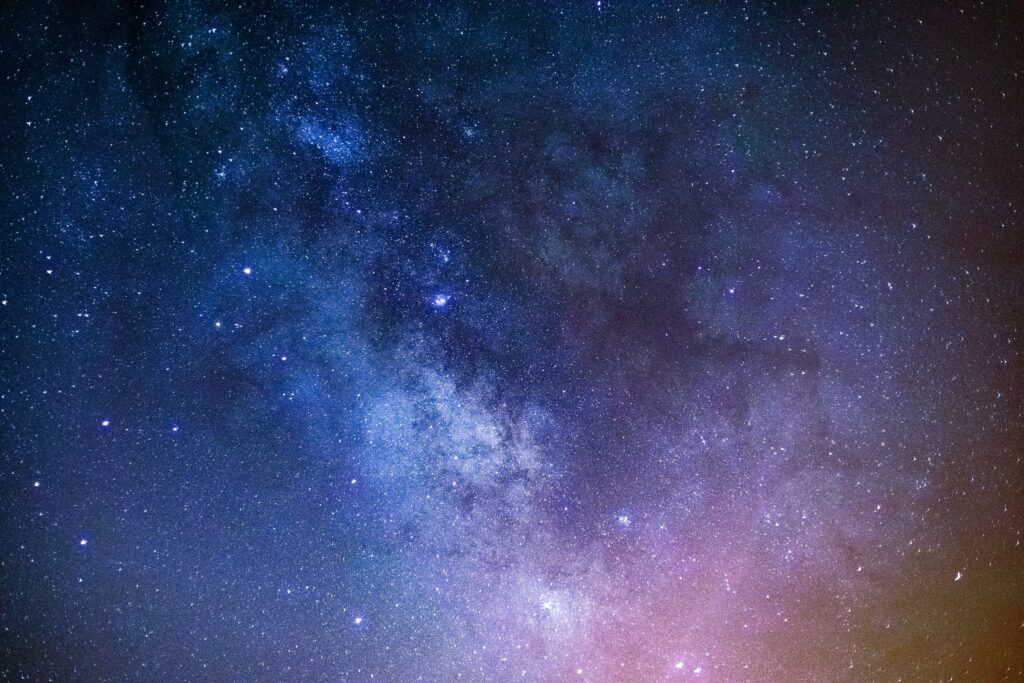Stars!! Oh, how beautiful they are! Sparkling like diamonds in the night sky, generating curiosities in the minds of young and the olds alike, and guiding travellers and voyagers across the ages. Each one of us, at some point in our lives, has watched them twinkling and might have wondered why they do so. I was starstruck too, literally.
Oh Yes, Refraction!!
The underlying reason for the twinkling of stars is the phenomenon of refraction. An electromagnetic wave gets deviated from its normal path when it travels through regions of varying densities and temperatures. Visible light, being an electromagnetic wave, undergoes the same experience.
A Cosmic Perspective
Stars are located far-flung in the cosmos. An example shows how much – The Sun, our own star lies at an approximate distance of 150 million kms from us; the next nearest star is Proxima Centauri which is approximately 40 trillion kms (that is 12 zeroes after 40). The farthest stars are much farther away in space.
The Reason Behind Twinkling
Because of the extreme distances from Earth, stars appear as points of light in the sky. A ray of starlight travels an enormous distance in its journey to reach us and everything is just fine until it strikes the first layer of our atmosphere. Earth’s atmosphere is comprised of different layers – Troposphere, Stratosphere, Mesosphere, and Thermosphere. Each layer has regions of cold and warm air swirling and generating air currents in the areas where density and temperature keep changing.
These effects cause the starlight to deviate multiple times while passing through the atmosphere before it reaches our eyes and gives us an impression of a zig-zag path of the light. Due to this, there is a fluctuation in the apparent position of the star causing the amount of light striking our eye to flicker and hence causing the twinkling effect.
There is a scientific name to this effect, Atmospheric Scintillation. It is an astronomical term for changes in stars’ brightness or their colors being distorted by our atmosphere. Few stars, such as Betelgeuse, Sirius, and Rigel appear to flicker between a range of colors when studied in detail under high-precision photometry.
This scintillation, although appearing pleasing to our eyes, is actually a nuisance to the astronomers as it limits the capabilities of ground-based telescopes. Because of continuous flickering, it becomes difficult for them to observe with high precision and conduct further studies.

Why Don’t Planets Twinkle Then?
On the contrary, planets remain steady and do not twinkle at all. This is because they are much closer to us than the stars. Compared to stars which act as a point source of light, a planet appears as a small disc in the sky and can be considered as an aggregate of such points. So, even if the rays of light coming from a planet do refract and bend, because it is a disc and an aggregate of points, the total variation in refraction averages out to zero making it appear non-twinkling.
In some cases, however, planets can twinkle too and this happens when it lies low in the sky. Areas near the horizon have more atmosphere than overhead and hence any light undergoes multiple refractions and thus twinkles. This is applicable to stars too and so lying low in the sky makes them even more twinkle.
Outside of Earth’s atmosphere, in outer space, both the planets and the stars shine steadily as there is no atmospheric turbulence to cause them to twinkle. So the astronauts in the International Space Station (ISS) wouldn’t be able to differentiate between a star and a planet; it’s a privilege for us residing on the surface.
The next time you’re out in a clear night sky, do look up at the diamonds, I usually do. Betelgeuse was sparkling amazingly this year in the late summer while Jupiter and Saturn were as steady as ever. And who knows there might be a star trying to communicate with you!!


